On Omar: Life and Love in Occupied Palestine
In Palakkad—a small town in central Kerala bordering Tamil Nadu, with the Western Ghats towering over it—and where I live now, the District Panchayath Library has been screening films every Friday. Last week, I went to the library for a screening of Hany Abu-Assad’s Omar (2013). Having watched some of Abu-Assad’s other films at the International Film Festival of Kerala over the years, the after-screening memories of watching those films with an audience still linger. I reached the library in an auto, making my way inside the building hesitantly, not knowing my way about as a first-timer. When I reached the small hall on the first floor of the building, I was elated to find it was packed with more than fifty people, who were probably there for similar reasons as me, on a late Friday evening.
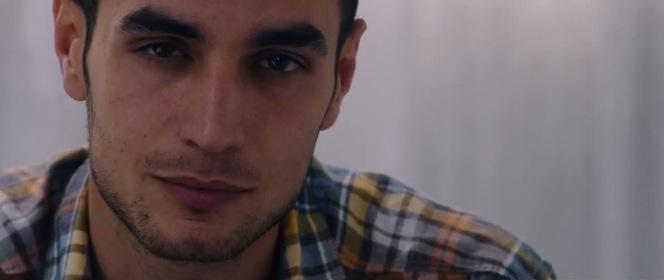
Omar.
As I sat there watching Omar, I could only think of how time and space indexed within the film is a reminder of the present, of how those spatial temporal coordinates have drastically shifted to what it is at this very minute. The emergency-like situation in the film has been rendered with a certain ‘normalcy’ in the ongoing genocide of Palestinians as represented in the media today.
A tense political thriller set in Palestine, the film follows Omar, a young Palestinian man, who is caught between love, loyalty and betrayal. It begins with Omar and his friends, Tarek and Amjad, practising shooting with guns in the woods. We soon realise that Omar is in love with Tarek’s sister, Nadia. They have their own world of exchanged letters of stories and poems. However, after they attempt an attack on a soldier, Omar is coerced into becoming an informant for the Israeli military, and finds himself entangled in a web of deception and mistrust. The narrative foregrounds this State-induced atmosphere of constant surveillance, suspicion and hatred as it seeps deep into the psyche of the Palestinian fighter, for whom love and life seem tragically impossible. Nadia’s love for Omar is the only tragic survivor in this field of war and games engineered by Israel.
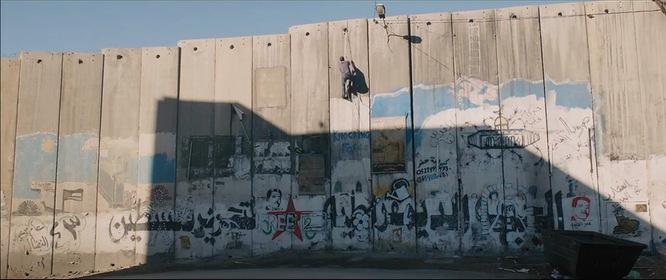
Omar scaling the West Bank wall to meet Nadia.
In the early part of the film, Omar effortlessly scales the West Bank wall using a rope hung there to meet Nadia secretly. On his return, he is stopped by Israeli troops. It becomes a moment of humiliating violence where Omar is ordered to stand on a rock after being asked to pull up his t-shirt. The absurdity of this act angers Omar, and he walks towards the soldiers who are ‘bullying’ him. As he resists by questioning their authority, they immediately increase his punishment. This humiliation and the air of mistrust loom in the air for the Palestinian.
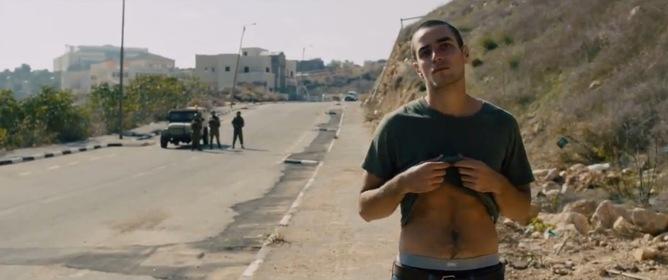
When Omar is returning after his rendezvous with Nadia and the Israeli army stops him.
Anyone who aspires for a life away from their land or a life of dignity, ironically, would have to become a spy in Omar’s cinematic world. The Israeli agent could appear as an Arab in prison and make insinuations or pointed hints about the love of one’s life to elicit a violent response. Every Palestinian person is just a disposable pawn in a game for the Israeli State in Omar. The eponymous protagonist realises this very late, after having lost the ability to climb the very same wall he used to scale with ease. Instead of letting his personal angst and anger towards Amjad (who also spins a web of lies to make Nadia his own) take over him, he kills the Israeli agent in the final shot of the film, aiming directly at the camera.
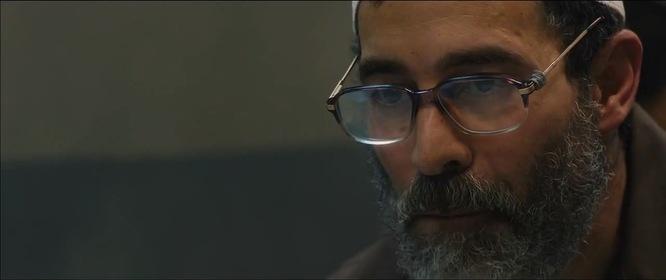
The Israeli agent dressed as an Arab in the prison.
The close-ups in Omar are carefully chosen, be it when Omar and Nadia kiss or when Omar and Nadia are talking to each other and the truth dawns upon Omar. The camera tracks in to their faces, capturing the intense realisations that shape Omar’s inner world. The wide shots embed the mise-en-scene with a constant sense of surveillance as the Israeli army watches Omar. In another crucial scene, Omar, who is at Nadia’s school to secretly meet her, is placed in an accidental surveyor position. As Omar starts doubting Amjad and Nadia, the framing heightens the tension to induce atmospheric chills in the spectator.
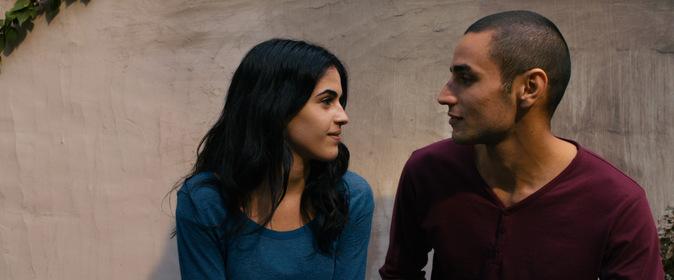
Nadia and Omar's secret meeting in the backalley.
The sunlight in the film, the bougainvillaea flowers in the back alley in which Nadia and Omar meet, the side walks on which they kiss, a home for which they plan to move into—all these spaces cease to exist in the narrative of the film as an idea for them, but also physically now in the West Bank. An existence of hope and love is fundamentally unavailable to the Palestinian, engineered by a repressive State. Omar, a baker who bakes fresh bread every day, is the target of the State because he is vulnerable enough to fall in love, and resists because he prizes dignity. The irony is that the State wants people to believe that they are after the person who shot the Israeli soldier, but in fact the idea of law or justice is just an excuse for the State to shatter the souls of the Palestinian people. In this manner, they are able take forward their game within an echo chamber, where everyone in the territory is dispensable and not a ‘citizen.’ Pointing to a larger history of violence against Palestinians, Omar needs to be revisited in these times as it stands as an affective archive of living under occupation.
To learn more about reflections on the ongoing Palestinian genocide, please read Santasil Mallik’s report on Gaza Lives organised as part of Film Works for Palestine in Toronto, Anoushka Antonnette Mathews’ essay on Abdel Salam Shehada’s Ila Aby (To My Father, 2008), Kshiraja’s essay on Yousef Srouji’s Three Promises (2023), Santasil Mallik’s review of Against Erasure: A Photographic Memory of Palestine before the Nakba (2024) co-edited by Sandra Barrilaro and Teresa Aranguren and Asim Rafiqui’s recollection of being on ground in Palestine in the aftermath of Operation Cast Lead in 2009.
All images are stills from Omar (2013) by Hany Abu-Assad. Images courtesy of the director.




